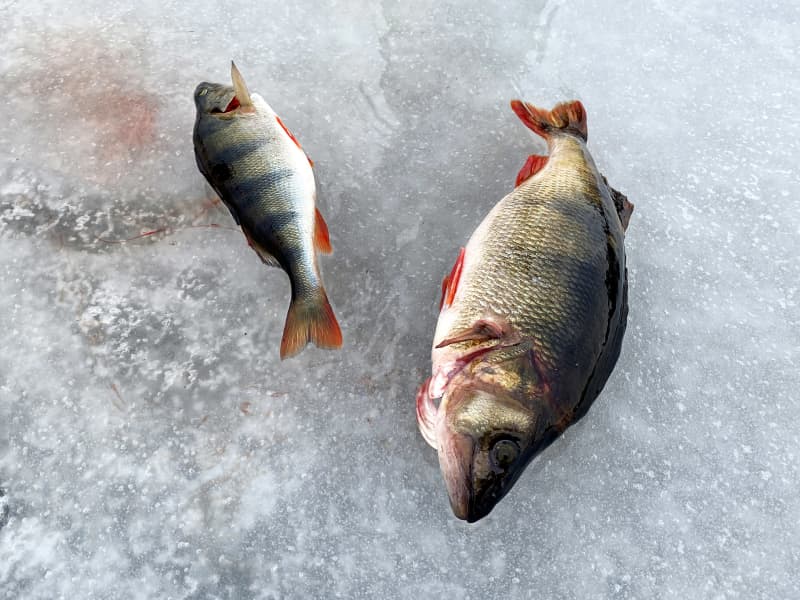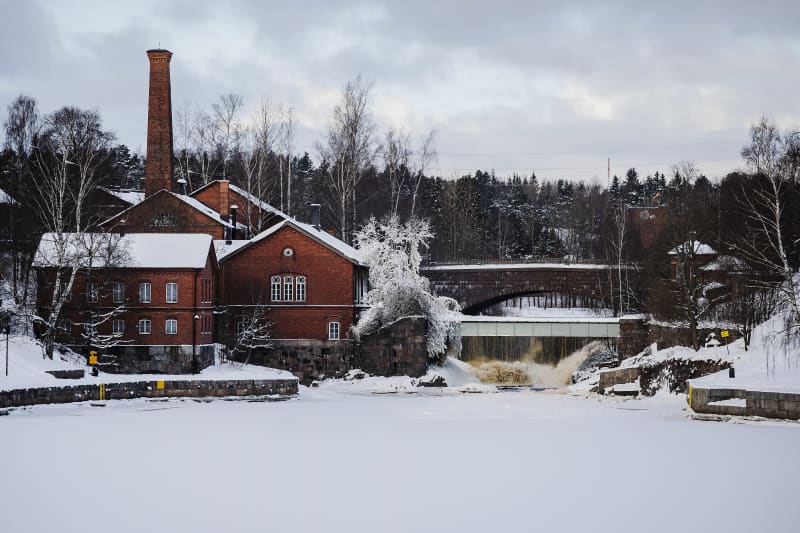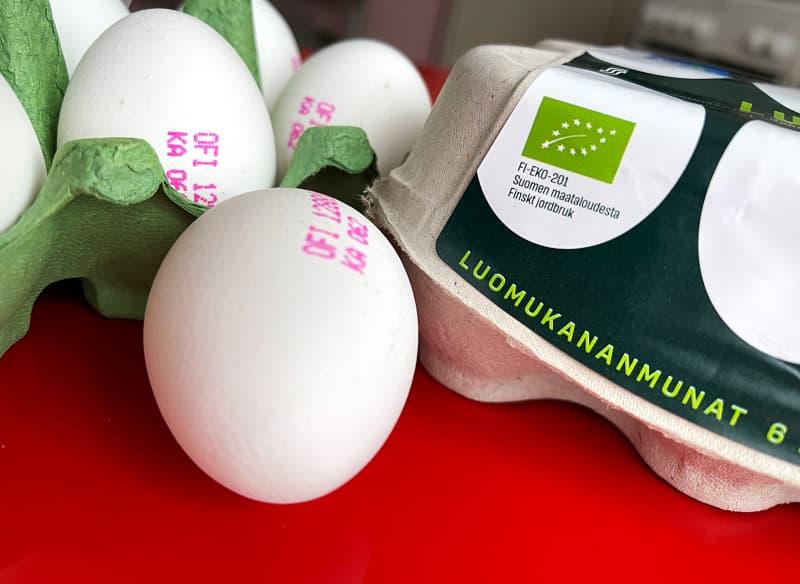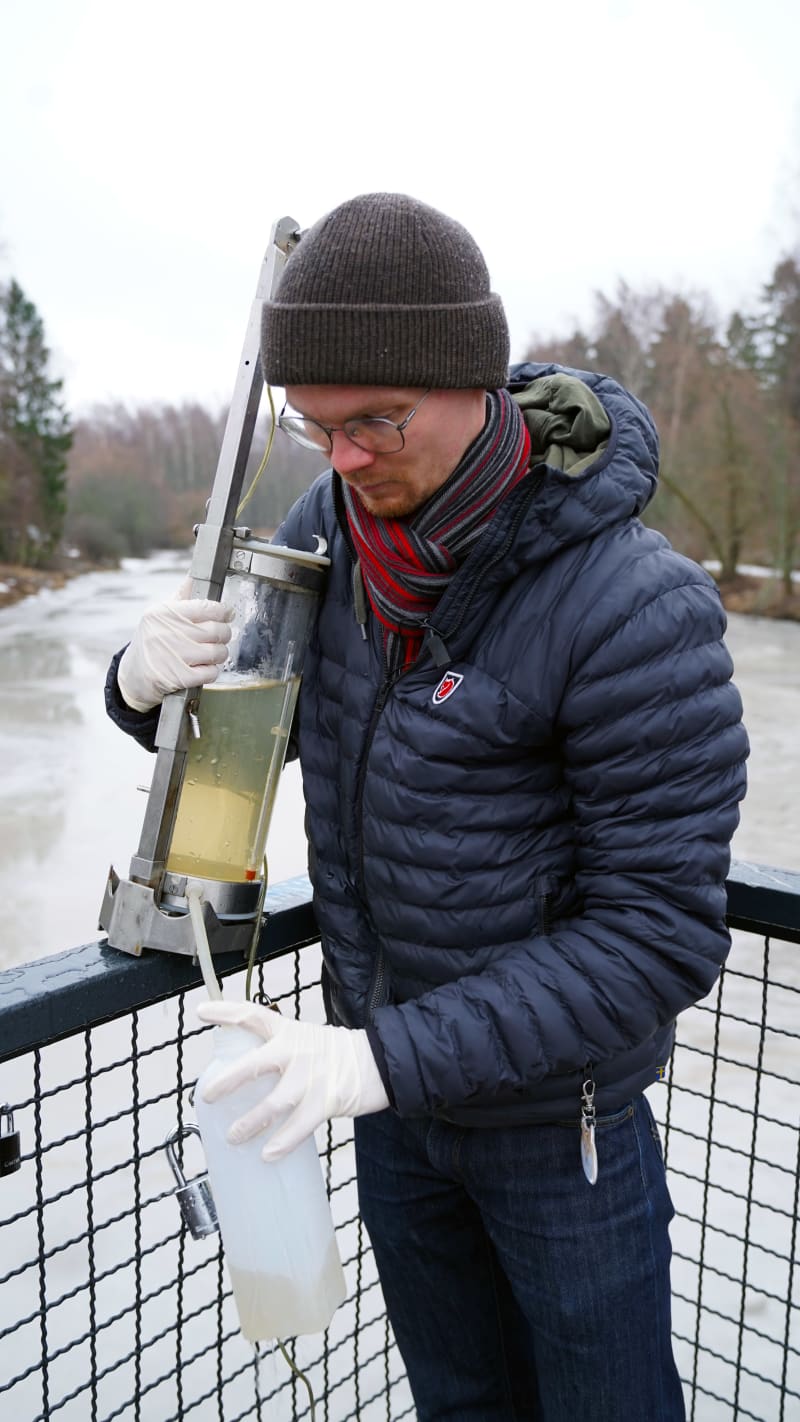Yle’s MOT delivery has investigated the presence of PFAS compounds in Europe in the international Eternal Chemicals project. In addition to the environment, substances have been found in fish and eggs.
In Finland, high concentrations of PFAS compounds have been observed in Europe. They have been measured, for example, in fish from different parts of Finland.
PFAS compounds used in many consumer products break down extremely slowly in the environment and can be harmful to health.
In Finland, important sources of PFAS compounds are, for example, Varkaus airport and the Kilpilahti factory area in Porvoo and the fire training areas in Lappeenranta. They have previously used extinguishing foams containing compounds.
Among the largest water areas, Vantaanjoki is the most polluted. Harmful PFAS emissions have ended up there from several different sources.
Yle’s MOT department has investigated the issue in the international Eternal Chemicals project.
In the project, for the first time, European-wide sites where PFAS compounds have been detected and sites that may be sources of emissions have been investigated.
PFAS compounds are harmful to health
PFAS compounds, i.e. per- and polyfluorinated alkyl compounds, are organic compounds that repel water, dirt and grease. They have been used in many consumer products such as frying pans and outdoor clothing such as goretex.
Not all the health effects of the compounds are fully known yet, but excessive exposure can affect a person’s immune defenses and weaken the effectiveness of vaccinations.
In small children, the disadvantages have been related to the fact that antibodies to vaccines do not develop. Children under the age of 1 receive more PFAS compounds from food in relation to their body weight than adults.
PFAS compounds accumulate in humans and in the environment and break down extremely slowly.

Vantaajoki most polluted waterways
Compounds harmful to the human body end up primarily in food. The most significant sources of PFAS among individual foodstuffs are fish, shellfish and meat.
High concentrations of harmful substances have been observed, especially in the fish of the Vantaanjoki.
Among Finland’s largest water bodies, the highest PFAS concentrations have been measured in Vantaanjoki. It fulfills the definition of a hotspot, i.e. a risk destination.
Some of the PFAS compounds in Vantaanjoki originate from the airport’s fire training area. Many people live along the river, and the wastewater treatment plants also lead PFAS compounds into the river, because the current cleaning methods are not designed to remove the compounds from the wastewater.

High PFAS concentrations were measured in fish and eggs
In the lower reaches of Vantaanjoki and in front of Helsinki’s Old Town Bay, fish meat accumulated much more harmful substances than allowed.
At the beginning of this year, the European Commission set maximum levels for PFAS compounds in food.
The highest PFAS values \u200b\u200bin fish were measured in Pyhtää. There, the measurements were made of fish liver. Generally, the compounds are measured from the fish muscle, i.e. the part that humans eat as a fish fillet. The situation of pure fish is not alarming, because humans rarely eat large quantities of fish liver.
The PFAS concentrations in Finnish fish are at a fairly similar level compared to other Nordic countries.

Alarmingly large amounts of harmful compounds have also been detected in some domestic organic chicken eggs, which exceed the maximum values \u200b\u200bset at the beginning of the year. The most significant reason for the increased concentrations is related to fish: the chickens are fed with fish meal made from natural fish.
According to the Food Agency, you can still eat organic eggs, the safe amount is 2–3 eggs per week.
According to experts, the health benefits of domestic fish exceed the possible health risks caused by pollutants. You can eat fish a couple of times a week.
You can explore PFAS areas on the map below:
Extinguishing foams are the most significant pollutant
The highest concentrations observed in the terrain in Finland have been found in the fire training area of \u200b\u200bthe Varkaus airport in Jorois and the Kilpilahti industrial area in Porvoo.
These areas are also so-called hotspots, i.e. risk areas.
The samples of joroinen were taken from the ditches of the fire training areas. The values \u200b\u200bare high, because extinguishing foam has reached the soil directly. High PFAS findings are in a small sector.
– However, the emissions are visible in the fish of the nearby water bodies as higher than usual PFAS concentrations, says researcher Ville Junttila from the Finnish Environmental Center.
High concentrations of harmful substances have also been measured in the fish of the coastal waters off Porvoo and the Porvoonjoki.
The material of the international group of journalists is based on studies conducted in different countries and information collected from the authorities.
High concentrations in the groundwater area of \u200b\u200bLappeenranta
High PFAS concentrations were also found in the Huhtiniemi groundwater area of \u200b\u200bLappeenranta a few years ago. At that time, their total number exceeded, for example, the lowest drinking water reference value given in Sweden.
There is no precise information on where PFAS compounds have entered the groundwater area. The area is located near the Lappeenranta airport, so it is suspected that the concentrations there also originate from extinguishing foams.
There is no information available in Finland on how widely, for example, extinguishing foams have polluted the environment.
– There has been an internal discussion at the Finnish Environmental Center about the need for a register of contaminated soil. It would be important to know how many risk sites we have, says Ville Junttila from the Finnish Environment Agency.
Perpetual chemicals break down very slowly in the environment. This is well illustrated by the fact that harmful compounds are still found in the soil, even though extinguishing foams containing PFOS compounds were already banned in 2011. Along with PFOA, PFOS is one of the most used PFAS compounds.

Huhtamäki cleans PFAS toxins in Norway
Throughout Europe, PFAS chemicals are still used. There are 20 industrial plants producing PFAS chemicals in the EU. There are more than 2,300 so-called hotspots, i.e. risk sites. The PFAS concentrations in these are so high that they are harmful to human health.
Compounds have also been used a lot in, for example, the forestry, metal and electronics industries.
However, there is no information available in Finland about which forest industry operators have used compounds and how much.
Suomalainen Huhtamäki Oy has used substances containing PFAS compounds in a factory in Norway that was closed a decade ago, where fiber-based serving dishes were manufactured, among other things. A lot of toxic compounds have been found in the soil sediments around the Viuli factory. The authorities have forbidden residents from eating fish from the nearby Tyrifjorden lake.
Last November, the Norwegian Environment Agency ordered Huhtamäki Oy to clean up the pollution from the area of \u200b\u200bthe property and the riverbed immediately connected to it.
In his email reply to MOT, Huhtamäki says that the company is starting to take the required improvement measures in cooperation with the authorities.
– Huhtamäki no longer uses PFAS chemicals in its production processes. In Finland, the company has never used them, says Huhtamäki’s communications.
In January, several countries proposed that the European Union ban the use of PFAS compounds in stages throughout the EU. The proposal is being evaluated by the scientific committee of the European Chemicals Agency ECHA.
*The information of the project’s map material has been collected from 18 scientific studies and 137 authorities, such as the European and Finnish environmental centers. LeMonde (France), NDR, WDR and Süddeutsche Zeitung (Germany), RADAR Magazine and Le Scienze (Italy), The Investigative Desk and NRC (Netherlands) have been responsible for data collection.*
*You can comment on the article until 11:00 p.m. on February 24, 2023.*
